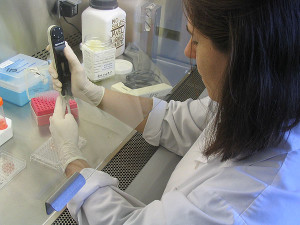Sensitization or exposure to beryllium in various industries like those of the aerospace facilities, mining extraction and beryllium alloy processing including research and development industries will require berylliosis screening. Workers in these industries are at high risk of developing beryllium-related diseases.
A research study in September 2004 was done to determine the significant level of risk among workers exposed to beryllium at the Department of Energy’s (DOE) nuclear weapons facilities. Berylliosis screening procedures were conducted at the Hanford Nuclear Reservation, Oak Ridge Reservation, and the Savannah River Site. Using beryllium blood lymphocyte proliferation test (BeLPT), the study concluded that this specific screening has a predictive value on the significant exposure of workers in the nuclear facilities.
BeLPT

Beryllium blood lymphocyte proliferation test (BeLPT) is a very important test to determine how the immune system reacts to beryllium. The lymphocytes are the blood cells in our body that fights disease. The test uses the blood from the arm vein. This test determines if the patient’s cell is reactive or non-reactive to beryllium.
- Normal or Non-reactive BeLPT result happens when lymphocytes did not react strongly to beryllium. This means that worker exposed to beryllium may not become sensitized.
- Abnormal or Reactive BeLPT result is when your cells react strongly to beryllium. A second test will be required to confirm the result. If the second test is still abnormal, then it means that the lymphocytes react strongly to the toxic metal. This confirms that the person has been sensitized or exposed to beryllium.
When you have been found to BeLPT abnormal, it will be an initial step to further undergo medical test to identify if the person has developed an occupational lung disease called chronic beryllium disease or CBD. However, being sensitized to beryllium does not always mean that you have CBD.
The decision to undergo further medical evaluation such as chest x-rays, Pulmonary Function Testing (PFT), High Resolution Computed Tomography (HRCT) and induced sputum (IS) tests is solely yours. But because the main goal of the Occupational Safety and Health Administration (OSHA) is to protect workers from occupational hazards then your administrators or directors will be required by the Office of the Occupational Medicine to accommodate you for further evaluation and treatment.